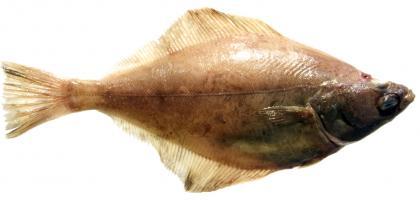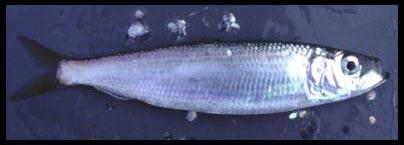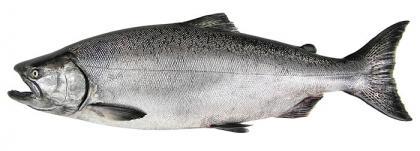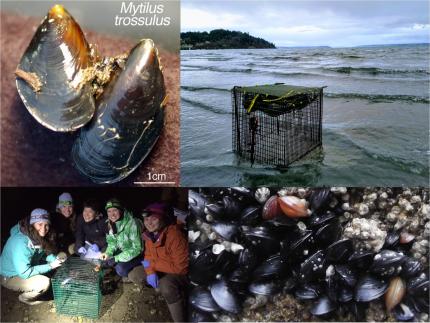The Fish Component monitors species from Puget Sound, which are abundant, widely distributed, and economically and/or ecologically important. Various life history traits affect whether fish are exposed to and accumulate contaminants, including:
- trophic level - the higher the level an animal feeds in the food web, the more likely it is to accumulate some contaminants;
- longevity - the longer an animal lives, the more time it has to be exposed to contaminants;
- home range - the smaller the home range, the easier it is to link contaminant exposure to a contaminant source;
- habitat - the potential for contaminant exposure may be affected by the habitat an animal occupies. For example, demersal (living near or on the bottom of the sea, or in very deep water) and benthic (living on or closely associated with the bottom of a body of water) fish will have more contact with contaminated sediments than a pelagic species;
- fat (lipid) content – some contaminants are fat soluble (lipophilic); therefore, species with higher fat content will have greater potential to accumulate lipophilic contaminants.
WDFW monitors a variety of species with different life history traits to give a broad overview of contaminants in Puget Sound fishes. Currently, we monitor contaminant levels in several species: English sole (Pleuronectes vetulus), Pacific herring (Clupea harengus pallasi), Chinook salmon (Oncorhynchus tshawytscha), and mussels (Mytilus trossulus).
English sole

Much of the research on contaminant accumulation in fish in the Puget Sound has focused on English sole. These demersal fish are moderately long-lived1, have a close association with the bottom sediments, consume benthic invertebrates, and have relatively restricted movements associated with seasonal migration for reproduction. These characteristics suggest that their probability of exposure to persistent bioaccumulative toxins is moderately high and that they will reflect regional spatial patterns of contamination in bottom sediments. Also, because they are purchased from the commercial fishery and are captured and consumed by some anglers, English sole represent a food-web pathway through which contaminants can move from sediments to humans.
The Fish Component has monitored the presence and severity of toxic contaminants in this species annually from 1989 through 1999 and began bi-annual monitoring in 2001. Click for sampling locations.
1. Age of the oldest English sole collected by the Fish Component was estimated at 21 years.
Pacific herring

Pacific herring are important prey to many species of Puget Sound fish, seabirds and marine mammals; consequently, their health is a good general indicator of the health of the Puget Sound ecosystem. As adults, herring are pelagic and wide-ranging, but with the onset of spawning, they move into the shallow near-shore habitat where they deposit their eggs on marine vegetation and other substrates. During an incubation period of about 14 days, the fertilized eggs could be exposed to contaminants through either direct contact with the sediments or by the water washing over them. After hatching, the pelagic larvae gradually move from the near-shore habitat to the open water column where they mature and spend the majority of their life.
Being planktivorous, larval and adult herring may be exposed to pollutants that are present in the water column and plankton. And because the muscle tissues of the adults are relatively high in lipids, they may readily accumulate lipophilic contaminants such as PCBs. In females, a portion of these lipophilic contaminants may be passed to the young along with the lipids used for egg development.
Historic studies by Fish and Wildlife have identified a number of discrete spawning stocks within South, Central and North Puget Sound. Examination of average contaminant exposure in the adult spawning stocks should reflect environmental contamination from the geographic areas in which these fish reside. Furthermore, because they are a short-lived species1, their contaminant loads reflect recent environmental conditions in their habitats.
The Fish Component completed a pilot study on contaminants in herring in 1995 and began annual baseline monitoring in 1999. Click for sampling locations.
1. Age of the oldest herring collected by the Fish Component were estimated at 6 years.
Salmon

Chinook and coho salmon are anadromous species and throughout their lives may be exposed to contaminants in freshwater, estuarine, or marine areas. Although specific migratory patterns of these two species vary, they both spawn in freshwater, live there for 3 to 15 months after emergence as embryos from gravel nests, and then migrate to marine waters. Contaminant concentrations in prey they consume may vary in these habitats. In freshwater, the young salmon consume aquatic insects and crustaceans but as they smolt and enter the estuary they consume a wider variety of invertebrates and larval fish. Adult salmon in marine waters continue to eat invertebrates but consume more epipelagic1 fish, increasing the likelihood of contaminant biomagnification in their tissues. The amount of time each species or population spends at sea varies widely but for both species the majority of their growth occurs in marine waters before they return to their natal streams to spawn. Short-lived fish like coho and chinook2 salmon, reflect current environmental conditions in their habitats.
The muscle tissues of adult Chinook and coho salmon have a relatively high in fat (lipid) content, thus they may accumulate higher concentrations of contaminants in these tissues. Females may pass lipophilic contaminants to their young along with the lipids used for egg development. Thus, the lipid content of the muscle tissue, gender and the degree of sexual maturity may all affect the accumulation of contaminants in these fish.
PSAMP began sampling coho and Chinook salmon in 1990 and now samples fixed locations bi-annually. Click for sampling locations.
Living or feeding on surface waters or at midwater to depths of 200 m.
For both the coho and Chinook salmon collected by the Fish Component, the maximum fish age was 5 years.
Mussels

Mussels and other sessile, filter-feeding bivalves have been used to monitor contaminant conditions in nearshore biota since the late 1970s. Mussels are a commonly used biomonitoring species because of their wide geographical distribution, large populations, sessile nature, and high filtering rates. Additionally, they lack the ability to metabolize most of the organic contaminants they absorb, so they reflect the profile of bioavailable pollution in their local environments. They accumulate contaminants in their soft tissues via multiple pathways including ingestion/filtering of contaminated food, sediments, and water, thus integrating exposure from both the water column and benthic sources in the nearshore. As they retain contaminants for approximately two to four months their contaminant loads reflect recent exposure.
Our mussel monitoring program uses a clean aquaculture source of native bay mussels (Mytilus trossulus) that are transplanted to their monitoring locations in anti-predator cages. Advantages to using transplanted mussels instead of wild mussel populations include fewer limitations on study locations, a uniform starting population, a known exposure period, and the ability to measure and compare certain biological endpoints (growth, body condition, mortality).
TBiOS began nearshore contaminant monitoring with transplanted mussels in 2012 (pilot study) and since established a long-term program that conducts biennial surveys. Each survey year mussels are transplanted to approximately 80 to 100 nearshore sites located throughout Puget Sound and the Washington Pacific coast. See the Sampling Locations tab for a map with recent survey site locations. The TBiOS Mussel Monitoring program also supports other local monitoring and adaptive management programs such as the Puget Sound Partnership’s Toxics in Aquatic Life Vital Sign, the Stormwater Action Monitoring and a national monitoring program (NOAA Mussel Watch).